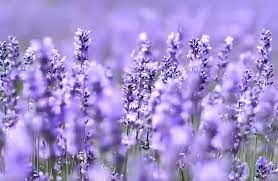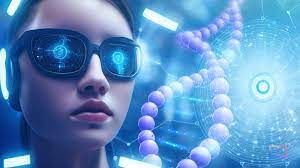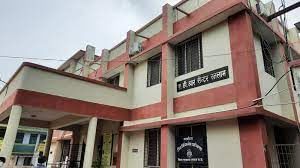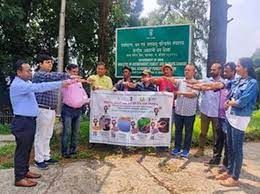UPSC Daily Current Affairs- 6th June 2023 | Current Affairs & Hindu Analysis: Daily, Weekly & Monthly PDF Download
GS-I
Lavender Festival

Why in News?
Recently, the Union Minister of Science & Technology inaugurated the Lavender festival at Bhaderwah in the Jammu region.
About Lavender Festival:
- It is the 2nd year of the lavender revolution. Bhaderwah has emerged as the Lavender capital of India and an Agri StartUp destination.
- The Council of Scientific & Industrial Research- Indian Institute of Integrative Medicine (CSIR-IIIM) in supporting farmers in the cultivation of Lavender in the Bhaderwah, Doda district, J&K under CSIR-Aroma Mission.
Key facts about CSIR-Aroma Mission:
- It is a flagship project of CSIR under which Lavender cultivation is being promoted in the temperate regions of J&K.
- It was launched under the Ministry of Science and Technology.
- The project aims to increase the income of small and marginal farmers and develop agriculture-based Startups.
What is Lavender?
- It is a flowering plant in the mint family that’s easily identified by its sweet floral scent.
- It’s believed to be native to the Mediterranean, the Middle East, and India.
Source: The Hindu
Pet coke
Why in News?
The Government recently, permitted the import of pet coke as a raw material for lithium-ion batteries.
About Pet Coke:-
- Pet Coke is one of the industrial by-products produced during oil refining.
- It is dark solid carbon material.
- It is used as a source of energy and carbon for various industrial applications.
- It is abundantly used in India in several manufacturing industries such as cement, steel and textile.
- It is significantly cheaper than coal, has high calorific value and is easier to transport and store.
- There are two kinds of pet coke produced during oil refining viz.
- Fuel-grade pet coke (80%) and
- Calcined pet coke (20%).
- India is the world’s biggest consumer of pet coke.
- Local producers: Indian Oil Corp, Reliance Industries and Bharat Petroleum Corp.
- Cement companies in India account for about three-fourths of the country’s pet coke use.
Environment and Health Hazards of Pet Coke:-
- Pet coke is a much more potent pollutant than coal.
- It contains a whopping 74,000 PPM of sulphur content, which is released into the atmosphere as emissions, which is much higher than vehicular emissions.
- It is also a source of fine dust, which can get through the filtering process of the human airway and lodge in the lungs, which can cause serious health problems.
- It releases sulphur, nitrous oxide, mercury, arsenic, chromium, nickel, and hydrogen chloride, which contribute to global warming.
Lithium
- It is a soft, silvery-white metal.
- It is the lightest metal and the lightest solid element.
- It has the highest specific heat capacity of any solid element.
- It is a good conductor of electricity.
- It is flammable and can even explode when exposed to air and water.
- Lithium is a crucial building block of the lithium-ion rechargeable batteries.
- Currently, India is heavily dependent on import of these cells and the move to ink sourcing pacts for lithium is seen as a move to reduce its dependency on China, which is a key source of both the raw material and cell.
Lithium-ion batteries
- A lithium-ion battery or Li-ion battery is a type of rechargeable battery.
- Working: Li-ion batteries use an intercalated (Intercalation is the reversible inclusion or insertion of a molecule into materials with layered structures) lithium compound as one electrode material.
- The battery consists of electrolyte, which allows for ionic movement, and the two electrodes are the constituent components of a lithium-ion battery cell.
- Lithium ions move from the negative electrode to the positive electrode during discharge and back when charging.
Applications:-
- Power electric vehicles (EVs), laptops and mobile phones.
- Applications in electronic gadgets, Telecommunication, Aerospace, Industries.
- Power source for electric and hybrid electric vehicles.
Advantages of Li-Ion battery:-
- It is light weighted and is one-third the weight of lead acid batteries.
- It is nearly 100% efficient in both charging and discharging as compared to lead battery, which has 70% efficiency.
- It completely discharges i.e. 100% as compared to 80% for lead acid.
- It has life cycle of 5000 times or more compared to just 400-500 cycles in lead acid.
- It also maintains constant voltage throughout entire discharge cycle whereas voltage in lead acid battery drops consistently throughout its discharge cycle.
- It is much cleaner technology and is safer for environment.
- It can be wireless.
Disadvantages of Li-ion Batteries:-
- Long charging times.
- Safety issues: instances of batteries catching fires have been there.
- Expensive to manufacture
Source: The Hindu
Use of AI against Superbugs

Why in News?
In a major breakthrough for the use of Artificial Intelligence (AI) in the field of medicine, scientists have found a new antibiotic – powerful enough to kill a superbug – using AI.
What are Superbugs?
- Superbugs are bacteria that are resistant to several types of antibiotics; they can be fungi as well.
- This happens when bacteria change over time and become resistant to drugs that are supposed to defeat them and cure the infections they cause.
- Such resistance directly caused 1.27 million deaths worldwide in 2019.
Antibiotics
- Antibiotics are medications that destroy or slow down the growth of bacteria. Doctors prescribe them to treat bacterial infections. They do this by killing bacteria and preventing them from multiplying.
- Alexander Fleming discovered penicillin, the first natural antibiotic, in 1928.
- Antibiotics cannot fight viral infections.
How did researchers use AI to find antibiotics against Superbug?
- Using Algorithms: Narrowing down the right antibacterial chemicals against bacteria can be a long, difficult process. The concept of AI is based on the process of machines being given large amounts of data and training themselves on identifying patterns and solutions based on them.
- Researchers first exposed A. baumannii grown in a lab dish to about 7,500 different chemical compounds, to see which ones could help pause the growth of the bacterium. Then they fed the structure of each molecule into the machine-learning model.
- They also told the model whether each structure could prevent bacterial growth or not. This allowed the algorithm to learn chemical features associated with growth inhibition.
- Analysis of Yielded Result: Once the model was trained, the researchers used it to analyse a set of 6,680 compounds. This analysis took less than two hours and yielded a few hundred results.
- Of these, the researchers chose 240 to test experimentally in the lab, focusing on compounds with structures that were different from those of existing antibiotics.
- Discovery of Abaucin: Those tests yielded nine antibiotics, including one that was very potent and effective at killing Acinetobacter baumannii. This has been named abaucin.
- Acinetobacter baumannii:
- In 2017, the bacterium was identified by the World Health Organization (WHO) as one of the world’s most dangerous antibiotic-resistant bacteria.
- A. baumannii is difficult to eradicate and can cause pneumonia, meningitis and infected wounds, all of which can lead to death.
- A. baumanni is usually found in hospital settings, where it can survive on surfaces for long periods.
Antibiotics Resistance
- Antibiotic resistance occurs when bacteria change in response to the use of antibiotics. This ultimately threatens the ability of medicines to treat common infectious diseases.
- Bacteria, not humans or animals, become antibiotic-resistant. These bacteria may infect humans and animals, and the infections they cause are harder to treat than those caused by non-resistant bacteria.
- Antibiotic resistance occurs naturally, but misuse of antibiotics in humans and animals is accelerating the process.
Concerns Associated with Antibiotics Resistance .
- Antibiotic resistance is one of the biggest threats to global health, food security, and development today.
- A growing number of infections - such as pneumonia, tuberculosis, gonorrhoea, and salmonellosis - are becoming harder to treat as the antibiotics used to treat them become less effective.
- The resistance to a powerful class of antibiotics called carbapenems - it defeats a number of pathogens - had risen by up to 10% in just one year alone.
- Things are so worrying that only 43% of the pneumonia infections caused by one pathogen in India could be treated with the first line of antibiotics in 2021, down from 65% in 2016.
- Antibiotic resistance leads to higher medical costs, prolonged hospital stays, and increased mortality.
Why is the Resistance on rise?
- Inappropriate prescription of antibiotics is driving up the incidence of antibiotic resistance.
- Sometimes prescriptions of the wrong medication — or the wrong dosage — can lead to antibiotic misuse.
- During the chaotic treatment of Covid-19, patients were treated with antibiotics which resulted in more adverse effects.
- Misuse can also occur when people do not take antibiotics as their doctor prescribes.
- A widespread lack of knowledge about antibiotics means that most patients - rural and urban - are not aware of antibiotic resistance. Even the rich and educated take antibiotics if they fall ill or pressure doctors to prescribe antibiotics.
Preventive Measures
- Some measures people can take include finishing the treatment course and not sharing antibiotic medications with others— even if they have the same symptoms.
- Only using antibiotics when necessary: Most doctors only prescribe antibiotics if the person cannot do without them.
- Using the shortest effective treatment: While it is vital to take all the antibiotics that a doctor prescribes, exactly as instructed, the doctor will prescribe the shortest possible course.
- Not using antibiotics for viral infections: Antibiotics have no effect on illnesses caused by viruses, such as the flu, and using antibiotics incorrectly in this way can contribute to drug resistance.
- Experts believe India needs to invest more in and beef up diagnostic labs, produce more infectious diseases physicians, reduce hospital infections and train doctors on usage of antibiotics based on tests to tackle the rising threat of superbugs. Otherwise, resistance to antibiotics has the potential of taking the form of a pandemic in near future.
Source: IE
District Legal Services Authority (DLSA)

Why in News?
Recently, under the Department of Justice's (Ministry of Law and Justice) Nyaya Bandhu, Pro Bono Club, ICFAI Law School, The ICFAI University, Tripura, in association with District Legal Services Authority West Tripura, organized a Door-to-Door Legal Aid Campaign.
About District Legal Services Authority:
- It is formed under Legal Services Authorities Act, 1987 to provide free legal aid and services to the weaker sections of this society to make sure that opportunities for securing justice are not denied to any citizen because of economic or other disabilities.
- It is a statutory body organized at the district level to provide effective monitoring of legal aid programmes and their composition.
- Legal Services Authorities are statutory bodies that are formed or constituted in the various states of India by the Legal Services Authorities Act, 1987.
- Constitutional provision:
- Article 39-A:Deals with the provision of providing free legal services to the citizens of India.
- The provision applies to the citizens if they are unable to bear the expenditure of legal services. It also helps the defendant in a case by appointing a lawyer to act for him in legal aspects.
- Composition of DLSA
- It is a body that shall be constituted by the State Government in consultation with the Chief Justice of the High Court.
- The act provides that a District Authority requires the district judge as its chairman.
- It shall also consist of a number of other members who have the experience and qualifications as prescribed by the State Government.
- The members possessing such requirements may be nominated by the Government in consultation with the Chief Justice of the High Court.
- The person to be appointed shall belong to the State Judicial Service not lowers than rank than that of a Subordinate Judge or Civil Judge posted at the seat of the District Judiciary as Secretary of the District Authority.
- The Assistant Commissioner of the concerned District acts as the Member Secretary of the District Authority.
- The officers and other employees of the District Authority are entitled to salary and allowances and shall also be subject to such other conditions of the services as the State Government in consultation with the Chief Justice of the High Court prescribes
Source: PIB
GS-III
Norovirus

Why in News?
Twenty-five crew members and 152 of the 2,144 passengers onboard the 2023 voyage of the Celebrity Summit recently reported norovirus symptoms.
About Norovirus:
- It is a common and very contagious virus.
- It causes nausea, vomiting and diarrhea.
- It is also sometimes referred to as the ‘stomach flu’ or the ‘ winter vomiting bug’.
- People of all ages can get infected and sick with norovirus , which spreads very easily and quickly.
- You can get norovirus illness many times in your life because there are many different types of noroviruses.
- Transmission:
- They commonly spread through food or water that is contaminated during preparation or through contaminated surfaces.
- Noroviruses can also spread through close contact with a person who has norovirus infection.
- Symptoms:
- The initial symptoms of norovirus are vomiting and/or diarrhoea, which show up one or two days after exposure to the virus.
- Patients also feel nauseous, and suffer from abdominal pain, fever, headaches and body aches.
- In extreme cases, loss of fluids could lead to dehydration.
- Treatment:
- No vaccines are currently available to prevent norovirus. Treatment for the infection focuses on relieving your symptoms.
- It is important to maintain hydration in the acute phase. In extreme cases, patients have to be administered rehydration fluids intravenously.
Source: The Hindu
The Environmental Information, Awareness, Capacity Building and Livelihood Programme (EIACP)
Why in News?
The Environmental Information, Awareness, Capacity Building and Livelihood Programme (EIACP) Centres have spread the message on LiFE during the World Environment Day celebrations held recently.
About The Environmental Information, Awareness, Capacity Building and Livelihood Programme (EIACP):-
- It is a Central Sector sub-scheme being implemented in alignment with Mission LiFE.
- Ministry: Ministry of Environment, Forest and Climate Change (MoEF&CC)
- In 2023, The Environmental Information System (ENVIS) was renamed EIACP (Environmental Information, Awareness, Capacity Building and Livelihood Programme).
- ENVIS: came into existence as in 1983.
- The focus of ENVIS was to provide environmental information to decision-makers, policy planners, scientists and engineers, research workers, etc. all over the country.
- EIACP is being implemented in alignment with Mission LiFE.
- Objective: it serves as a one-stop platform for the dissemination of environmental information, informed policy formulation on various facets of the environment and facilitation of alternate livelihoods through green skilling.
- 60 EIACP Centres are actively engaged in promoting awareness about sustainable actions that individuals can undertake.
- ENVIS: came into existence as in 1983.
Environment Education Programme (EEP)
- It is a Central Sector sub-scheme.
- Objective: for imparting non-formal environment education through inter alia initiatives for strengthening Eco-club activities in schools and colleges.
- Sharing the common goal of promoting a sustainable lifestyle.
- Implementation: It is implemented in full alignment with Mission LiFE, through State/UT-level Implementing Agencies.
- Implementing Agencies of EEP have organized some unique and eco-friendly initiatives like nature camps, eco-art workshops, clay & pottery workshop, promotion of eco-friendly green wedding ideas, awareness campaigns on medicinal plants, campaigns in marketplaces against single-use plastics etc.
- Eco-clubs are used as an effective medium to spread messages on LiFE.
Mission LIfestyle for Environment (Life):-
- Background: At the 2021 UN Climate Change Conference (UNFCCC COP26), Hon’ble Prime Minister of India Shri Narendra Modi announced Mission LiFE.
- Aim: to bring individual behaviours at the forefront of the global climate action
- LiFE envisions replacing the prevalent ‘use-and-dispose’ economy with a circular economy, which would be defined by mindful and deliberate utilisation.
- Approach:-
- Focus on Individual Behaviours: Make Life a mass movement (Jan Andolan) by focusing on behaviours and attitudes of individuals and communities.
- Co-create Globally: Crowdsource empirical and scalable ideas from the best minds of the world, through top universities, think tanks and international organisations.
- Leverage Local Cultures: Leverage climate-friendly social norms, beliefs and daily household practices of different cultures worldwide to drive the campaign.
- Objectives :-
- It aims to promote an environmentally conscious lifestyle that focuses on ‘mindful and deliberate utilisation’ instead of ‘mindless and wasteful consumption’.
- It aims to utilise the power of collective action.
- It aims to nudge individuals across the world to undertake simple climate-friendly actions in their daily lives.
- It aims to create and nurture a global network of individuals, namely ‘Pro-Planet People’ (P3).
- Pro-Planet People’ (P3): to have a shared commitment to adopt and promote environmentally friendly lifestyles.
- It seeks to leverage the strength of social networks to influence social norms surrounding climate.
Source: PIB
Moss

Why in News?
A recent global study on moss reveals that they are far more vital to Earth’s ecosystems than previously known.
About Moss:-
- Mosses are small, soft, flowerless Plants.
- Scientific Classification:-
- Kingdom – Plantae
- Division – Bryophyta
- They have Stomata.
- Stomata: cells specialized for photosynthetic gas exchange.
- They are some of the oldest land plants and existed as early as the Permian Period (299 to 251 million years ago).
- Unlike most other plants, mosses do not have roots. Instead, they have rhizoids, which are small hair like structures.
- Distribution: They are found all over the world, from lush tropical rainforests to the driest deserts.
- They are found growing in cracks along roads and pathways, on the trunks of trees, on rocks and buildings, and importantly, on the
- They are found even in
Salient Features:-
- Non-Vascular Plants: Mosses lack a Vascular system i.e. xylem and phloem.
- Habitat Indicators: Mosses can also be extremely useful as Habitat Indicators.
- Ability to revive with very Less Water: Mosses are an amazingly resilient and versatile group of Plants.
- Absence of Flowers and Seeds: They do not have flowers or seeds.
- Presence of Multicellular Rhizoid: Mosses are the only Plants that have a Multicellular Rhizoid.
- Rhizoid: a root-like subterranean tissue that absorbs water and nutrients from the soil.
- Radial Symmetry: if they are cut down, the long axis of an individual gives two similar halves.
- Tendency to grow in Clusters: They commonly grow close together in clumps or mats.
Importance of Mosses:
- Mosses function like sponges, using their capillary spaces to hang on to water.
- They help to soak up rainfall, maintain moisture in the soil below and keep conditions around them humid. This enables other plants around them thrive, such as in habitats like marshes and woodland.
- Mosses also play a vital role in the development of new ecosystems. They are among the first plant colonisers of disturbed sites, such as when an area is deforested or affected by forest fires. They stabilise the soil surface and retain water, helping new plants to grow.
- Mosses can affect the temperature of the soil, both warming it up and cooling it down depending on the environment.
- In hot places, they can protect tree roots by shading and insulating the soil from high temperatures. In the Arctic, they have an opposite effect on temperature. They can prevent the warmth of the sun from reaching the ground and reduce the speed at which ice thaws, keeping it cooler for longer.
- Some mosses are luminous. Some mosses have adapted to low light conditions and are even found growing in caves. One of the most well-known cave mosses is Schistostega pennata, also known as dragon’s gold, which shines an emerald green colour.
Source: DownToEarth
|
44 videos|5343 docs|1128 tests
|


















